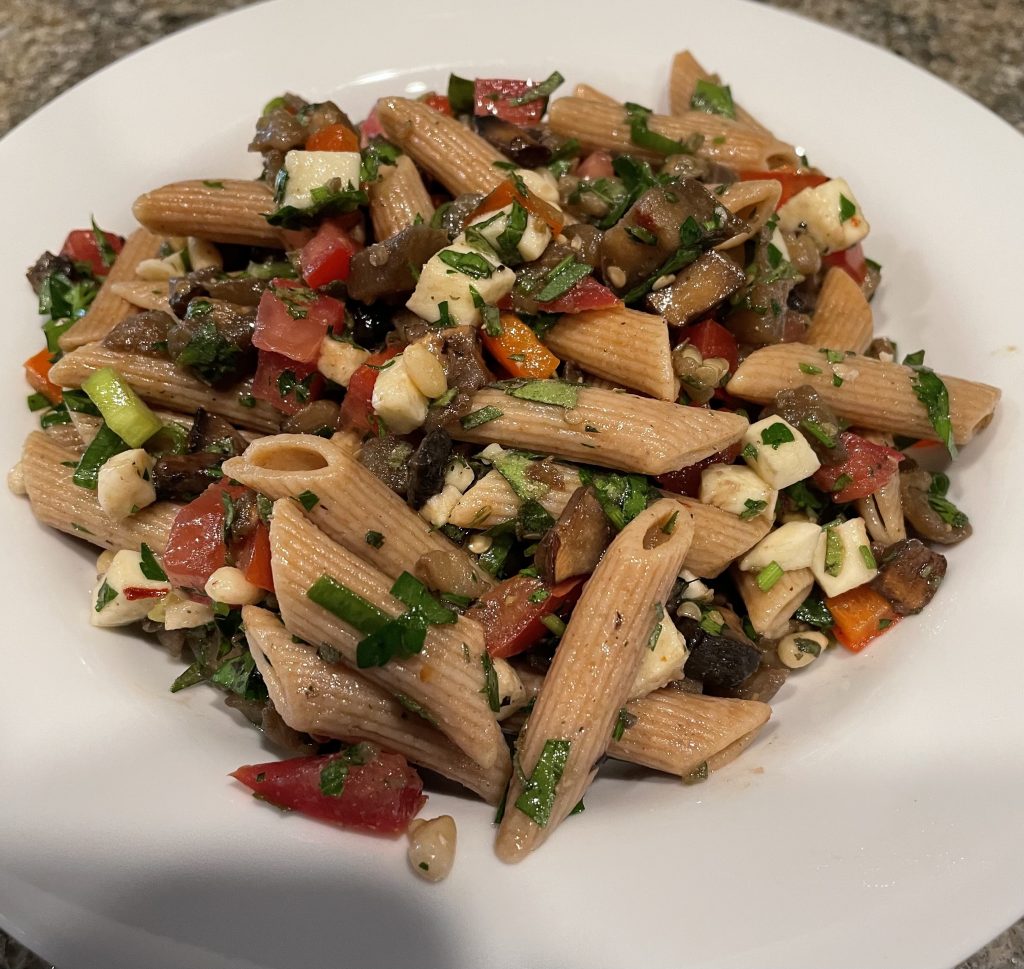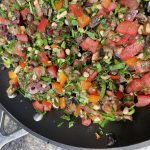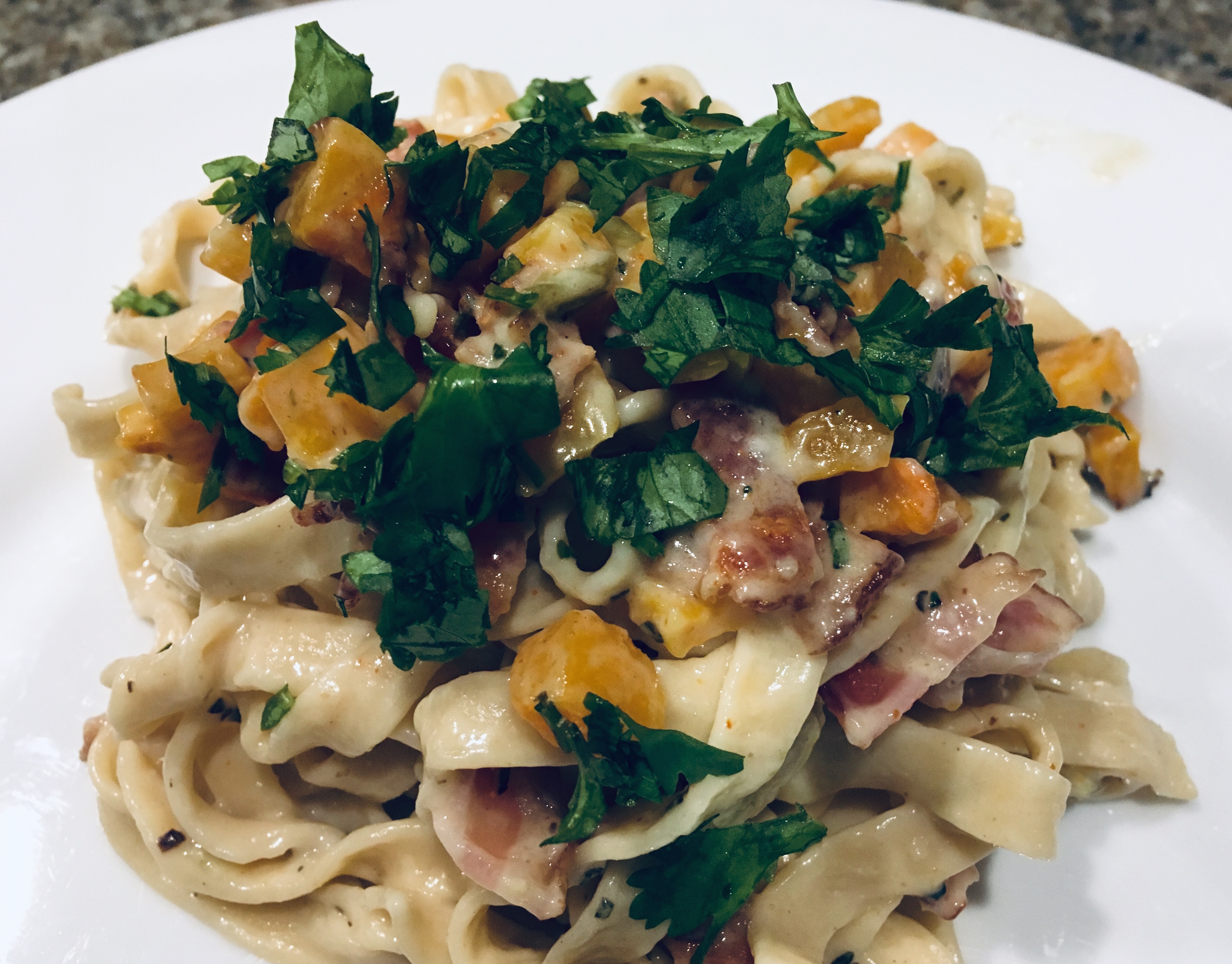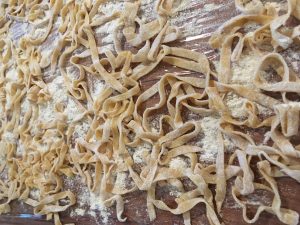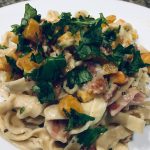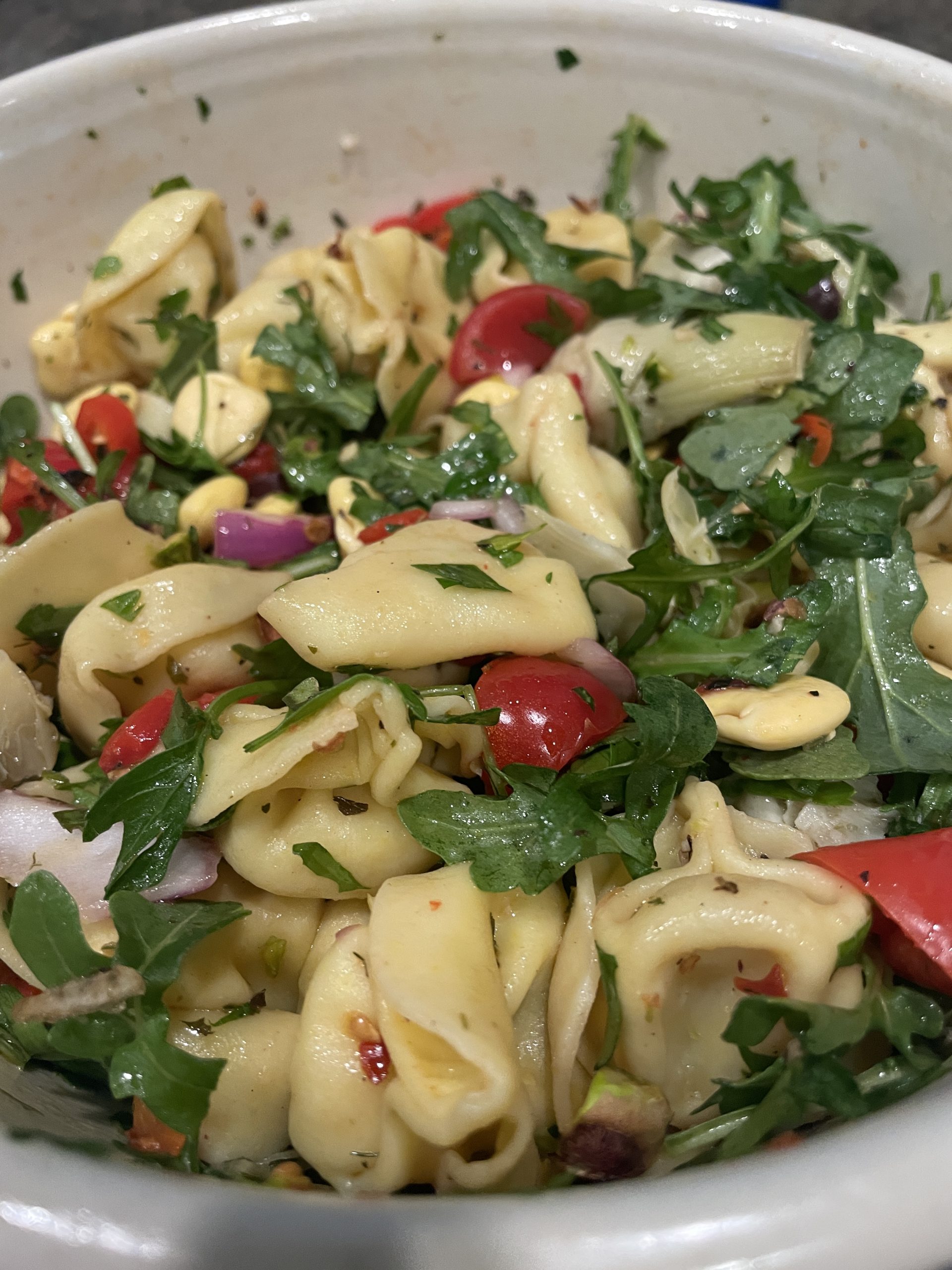
Pasta salad wasn’t on the farmhouse menu. It simply wasn’t a dish that Mom made. While I might see it at a pot luck, it undoubtably used mayonnaise, so I’d give it a pass. But lighter, fresher versions came around and suddenly I’m all in. My tortellini pasta salad combines fresh tortellini pasta with all the yumminess of an Italian antipasto plate. It also includes a relatively new-to-me ingredient called lupini beans. But as it turns out, most Italians along with others of the Mediterranean basin are quite familiar with these beans.
I’m always on the lookout for plant sources of protein to “beef” up my plant based menus, so to speak. Thinking I knew all the usual suspects-beans, lentils, tofu, seitan, nuts, seeds and grains-I was surprised to hear Mark Bittman hawking Brami lupini beans on his podcast, Food. High in protein and fiber, low in fat and carbs, full of vitamins and minerals, with an almost crisp texture and very neutral flavor. Not remotely what I think of as a bean.
Lupinis are a bit high maintenance to prepare; they must be boiled, then soaked and drained repeatedly until the bitter alkaloids have soaked out, much like preparing fresh olives from scratch at home. I’ve done this… and I prefer buying them already prepared and brined in bottles. A visit to my local Italian market or Mediterranean store always results in several bottles of lupini beans being added to the order.
Lupinis have evidently been a staple food in Italy, the Middle East and South America for centuries. Today they are apparently eaten mostly as a healthy snack, sold as street food or at fairs. But they offer up everything I am looking for in a protein ingredient. And into the pasta salad they went, along with all the antipasto, some arugula, and cubed Manchego. (You might have noticed that cheese is my not even remotely plant based Kryptonite.) Tossed with a simple vinaigrette and fresh herbs, this sits quite comfortably in the center of my plate for a delicious, refreshingly cool summer dinner.
As is the case for most pasta salads, you can modify to your heart’s content using what you might have on hand. In a meatier state of mind? Replace the lupini with small cubes of pancetta. Use tortellini with other fillings, or use a totally different pasta. Substitute a dried and cooked pasta for the fresh type. Sub in Italian style giardiniera, cubes of zucchini or steamed broccolini. Make it vegan using vegetable filled tortellini and plant based cheese. Make it your own! But do make it.
Tortellini Pasta Salad
Ingredients
- 12 oz fresh tortellini pasta filling of choice
- 3/4 cup chopped tomato or halved grape tomatoes
- 6 large bottled artichoke hearts, rinsed, drained and quartered
- 2/3 cup bottled lupini beans, rinsed and drained, popped out of the peels
- 1/2 cup sliced pepperoncini, rinsed and drained
- 1/3 cup sliced Kalamata olives
- 1/3 cup sliced red onion
- 2 cups fresh arugula, packed
- 1/2 cup Manchego cheese, cubed into 1/4-inch pieces
- 1/2 cup finely sliced fresh basil
Herbed Vinaigrette Dressing
- 3 tbsp extra virgin olive oil
- 2 tbsp white wine vinegar
- 1/4 tsp salt
- 1/4 tsp finely ground pepper
- 1/2 tsp Chili flake
- 1/2 tsp each dry basil, oregano and dill
Instructions
- Whisk together all ingredients for the dressing
- Combine the salad ingredients in a large bowl. Pour over the dressing and toss to coat.

